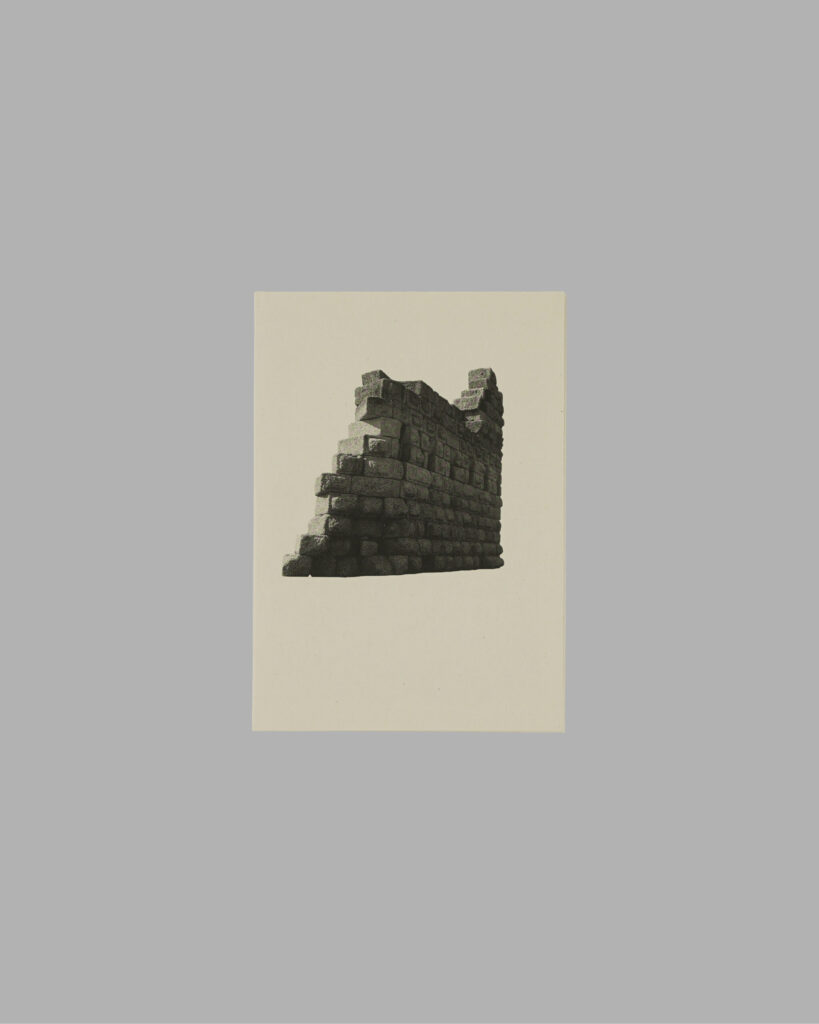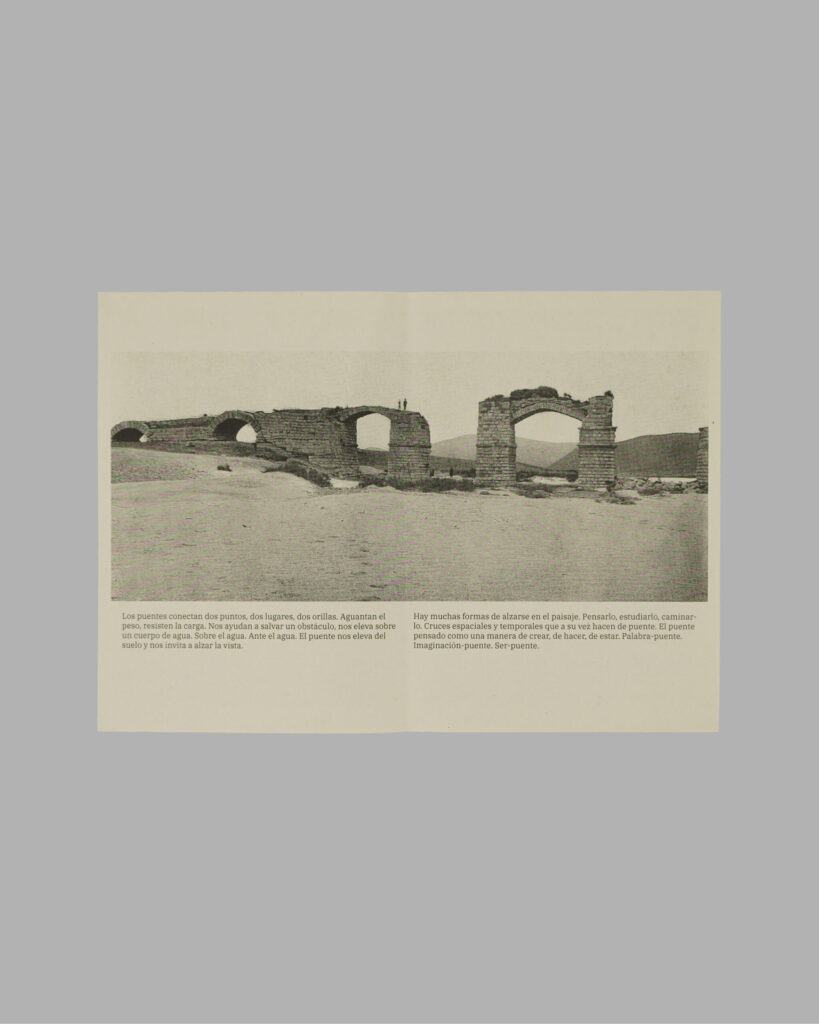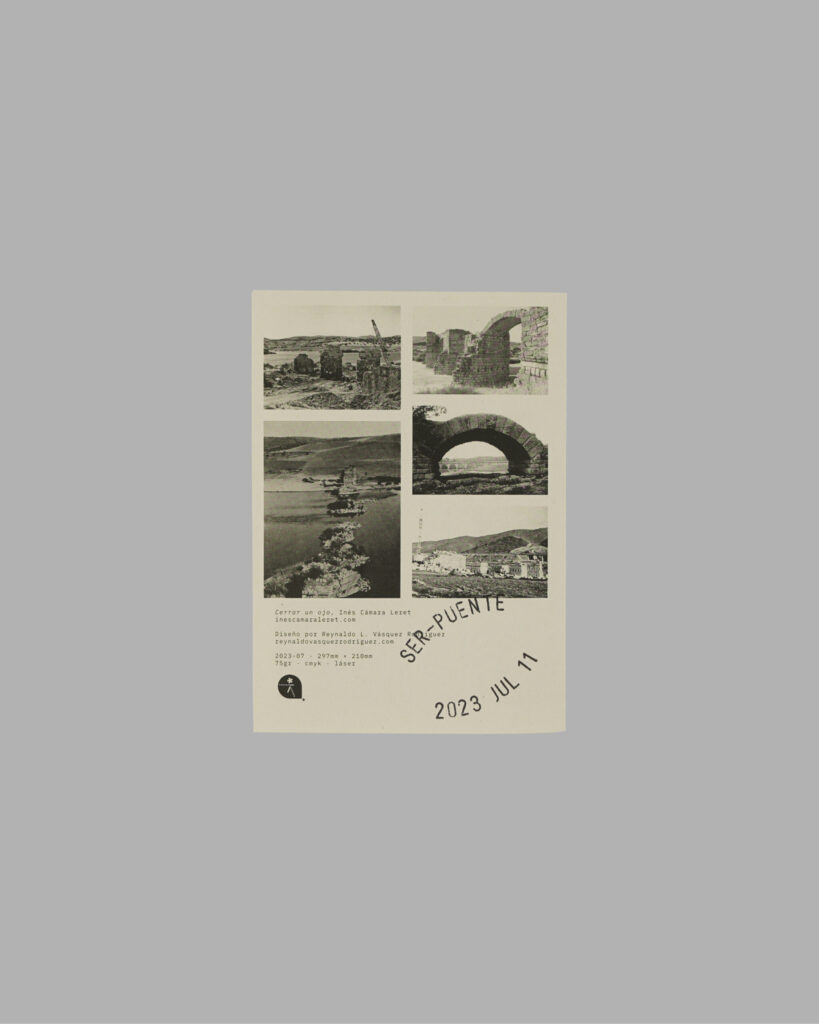Los puentes conectan dos puntos, dos lugares, dos orillas. Aguantan el peso, resisten la carga. Nos ayudan a salvar un obstáculo, nos eleva sobre un cuerpo de agua. Sobre el agua. Ante el agua. El puente nos eleva del suelo y nos invita a alzar la vista.
Hay muchas formas de alzarse en el paisaje. Pensarlo, estudiarlo, caminarlo. Cruces espaciales y temporales que a su vez hacen de puente. El puente pensado como una manera de crear, de hacer, de estar. Palabra-puente. Imaginación-puente. Ser-puente.
El puente de Alconétar se construyó en el siglo 2 en la antigua villa de Garrovillas de Alconétar sobre el río Tajo. Su ubicación estratégica permitía conectar la península, de norte a sur. En 1970 el dictador Francisco Franco inaugura el embalse de Alcántara y reubica las ruinas de este puente, piedra a piedra, en las orillas del embalse.
El contenido de este embalse no son solo los 3162 hectómetros cúbicos de agua pero también la antigua villa de Alconétar. Actualmente acceder a el puente tiene truco. Hay que tomar un desvío. Deshacer unos nudos que hay en una valla que tiene una señal que dice: ‘Coto privado de caza’.
‘Cerrar un ojo’ es una instalación escultórica que juega con los vacíos del puente actual, operando como una suerte de remiendo. La estructura de la instalación está compuesta de tubos de PVC, material utilizado para el transporte y distribución de aguas. Su longitud es equivalente al vacío que encontramos al tratar de cruzar el cuarto ojo del puente que actualmente es inexistente, debida a la continuada falta de mantenimiento.
Cerrar un ojo para así tratar de mantenerlos abiertos.
Bridges connect two points, two places, two shores. They bear the weight, endure the load. They help us overcome an obstacle, lifting us over a body of water. Over the water. Before the water. A bridge rises from the ground and invites us to lift our gaze.
There are many ways to rise within a landscape: to think it, to study it, to walk it. Spatial and temporal crossings that, in turn, act as bridges. Bridge-word. Bridge-imagination. Bridge-being.
The Alconétar Bridge was built in the 2nd century in the ancient town of Garrovillas de Alconétar, spanning the Tagus River. Its strategic location connected the Iberian Peninsula from north to south. In 1970, dictator Francisco Franco inaugurated the Alcántara reservoir and relocated the ruins of the bridge—stone by stone—to the shores of the reservoir.
The contents of this reservoir are not only the 3,162 cubic hectometers of water, but also the submerged remains of the old town of Alconétar. Today, reaching the bridge requires a trick: taking a detour, untying some knots on a fence marked with a sign that reads “Private hunting reserve.”
‘Cerrar un ojo’ is a sculptural installation that plays with the gaps of the current bridge, operating as a kind of patch. The structure is made of PVC pipes, a material used for water transport and distribution. Its length matches the void one encounters when trying to cross the bridge’s fourth arch—now absent due to continuous lack of maintenance.
To close one eye, in order to try to keep them open.
Source: https://www.inescamaraleret.com/cerrar-un-ojo.html




Made in: Spain, Madrid · First edition: 2023/07/11 · Edition size: Open · Pages: n/a · Paper: Recycled 80 g/m² · Dimensions: 297 × 210 mm (A4, open)· Process: Monochrome laser · Binding: Loose sheet